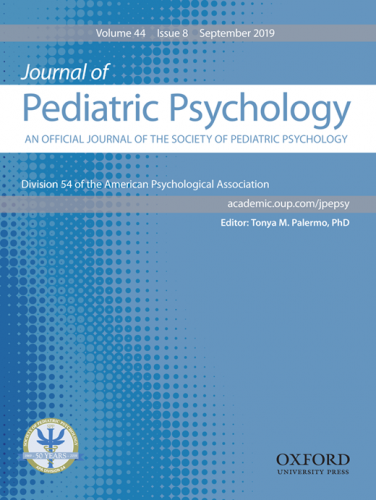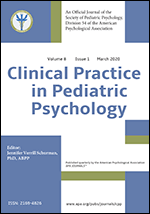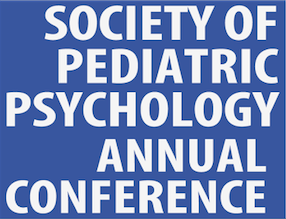Fact Sheet: Chronic Pain in Children and Adolescents
Although definitions vary, chronic pain is typically characterized as pain that persists over a period of at least 3 months. Chronic pain may be related to unresolved injury (e.g., acute to chronic pain transition), a chronic illness (e.g. arthritis), or most frequently the underlying cause is unknown (idiopathic, primary pain) (e.g., fibromyalgia, functional abdominal pain). Mechanisms of chronic pain are multifactorial resulting from complex changes in the pain processing system. Biological/physical, social and psychological factors have all been implicated in the development of chronic pain.
Prevalence and Course
Chronic pain in childhood is common. In epidemiological surveys, the median prevalence of chronic pain reported in community samples of children and adolescents is 11 to 38 percent. Common pain conditions include: musculoskeletal pain, abdominal pain, headache, neuropathic pain, fibromyalgia, temporomandibular disorders and disease-related pain such as from sickle cell disease, arthritis, cancer, inflammatory bowel disease and severe neurological impairment. Long-term outcome studies indicate that children with chronic pain are at-risk for continuation of pain into adulthood, and the development of new forms of chronic pain in adulthood.
Health and Psychosocial Consequences
An estimated 5 to 10 percent of youth experience significant pain-related impact or disability including reduced school attendance, disruption in physical activity, decreased participation in social activities, sleep deficiency, anxiety, and depression. Parenting a child with chronic pain can disrupt parents and family life. Parents often describe significant social restrictions, emotional distress, and financial burden. Longitudinal research further suggests that vulnerability to mood disorders including anxiety and depression can extend into adulthood, even after the pain resolves.
Evidence-based Psychological Assessment
Pain characteristics as well as pain-related impact (e.g., physical, social, emotional and family functioning, sleep, and health behaviors) are important to assess and should guide psychological treatment approaches. A variety of evidence-based assessment tools are available (see PedIMMPACT guidelines; see JPP empirically supported assessment article on functional disability and quality of life).
Culture, Diversity, Demographic and Developmental factors
Although most children treated in pain clinics are Caucasian, the impact of race, ethnicity, and socioeconomic status on prevalence and course of pediatric chronic pain has received little attention and remains an important gap in knowledge. Across most forms of chronic pain in childhood and adolescence, females assume a much higher prevalence in comparison to males. Consideration of developmental factors in assessment and treatment is also important. With increasing age and more advanced pubertal development, the occurrence of pain problems increases. Occurrence of chronic pain peaks in adolescence (around 15-16 years), when adolescents are seeking more independence and responsibility. Thus, transition of pain self-management tasks from parents to adolescents and transition from pediatric to adult health care are important considerations.
Evidence-based Interventions
Meta-analytic reviews support the efficacy of psychological interventions (predominantly cognitive-behavioral therapy) for reducing pain and disability in children. Parent interventions (e.g., parent problem solving therapy) have also been shown effective. Interventions have been delivered individually, in groups, with families, and remotely via technology (internet and mobile applications). Other psychological therapies include hypnosis, mindfulness, and acceptance and commitment therapy, which have been delivered to children and adolescents with pain, with less available evidence to date.
Resources
- International Association for the Study of Pain (Pain in Childhood SIG)
- Pediatric Pain Letter (Commentaries on pain in infants, children, and adolescents)
- Pain in Child Health (PICH) research training initiative
Author: Tonya Palermo, Ph.D.
Date of last update: May 2019
References
- Eccleston, C., Fisher, E., Law, E., Bartlett, J., & Palermo, T. M. (2015). Psychological interventions for parents of children and adolescents with chronic illness. Cochrane Database of Systematic Reviews, (4).
- Fisher, E., Law, E., Dudeney, J., Palermo, T.M., Stewart, G., Eccleston, C. (2018) Psychological therapies for the management of chronic and recurrent pain in children and adolescents. Cochrane Database of Systematic Reviews, (9).
- Huguet, A., & Miro, J. (2008). The severity of chronic pediatric pain: an epidemiological study. Journal of Pain, 9(3), 226-236.
- Jordan, A. L., Eccleston, C., & Osborn, M. (2007). Being a parent of the adolescent with complex chronic pain: An interpretative phenomenological analysis. European Journal of Pain, 11(1), 49–56.
- King, S., Chambers, C.T., Huguet, A., MacNevin, R.C., McGrath, P.J., Parker, L., & MacDonald, A.J. (2011). The epidemiology of chronic pain in children and adolescents revisited: a systematic review. Pain, 152, 2729-2738.
- McGrath, P.J., Walco, G.A., Turk, D.C., et al. (2008). Core outcome domains and measures for pediatric acute and chronic/recurrent pain clinical trials: PedIMMPACT recommendations. Journal of Pain, 9, 771-783.
- Palermo, T.M., Eccleston, C., Lewandowski, A.S., Williams, A. C., & Morley, S. (2010). Randomized controlled trials of psychological therapies for management of chronic pain in children and adolescents: An updated meta-analytic review. Pain, 148(3), 387-397.
- Palermo, T. M. (2012). Cognitive-behavioral therapy for chronic pain in children and adolescents. New York, NY: Oxford University Press.
- Palermo, T. M., Valrie, C. R., & Karlson, C. W. (2014). Family and parent influences on pediatric chronic pain: A developmental perspective. American Psychologist, 69(2), 142.
- Walker, L.S., Dengler-Crish, C.M., Rippel, S., & Bruehl, S. (2010). Functional abdominal pain inchildhood and adolescence increases risk for chronic pain in adulthood. Pain, 150(3), 568-572.



